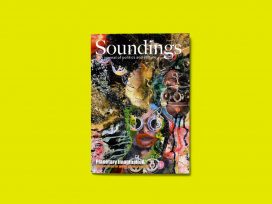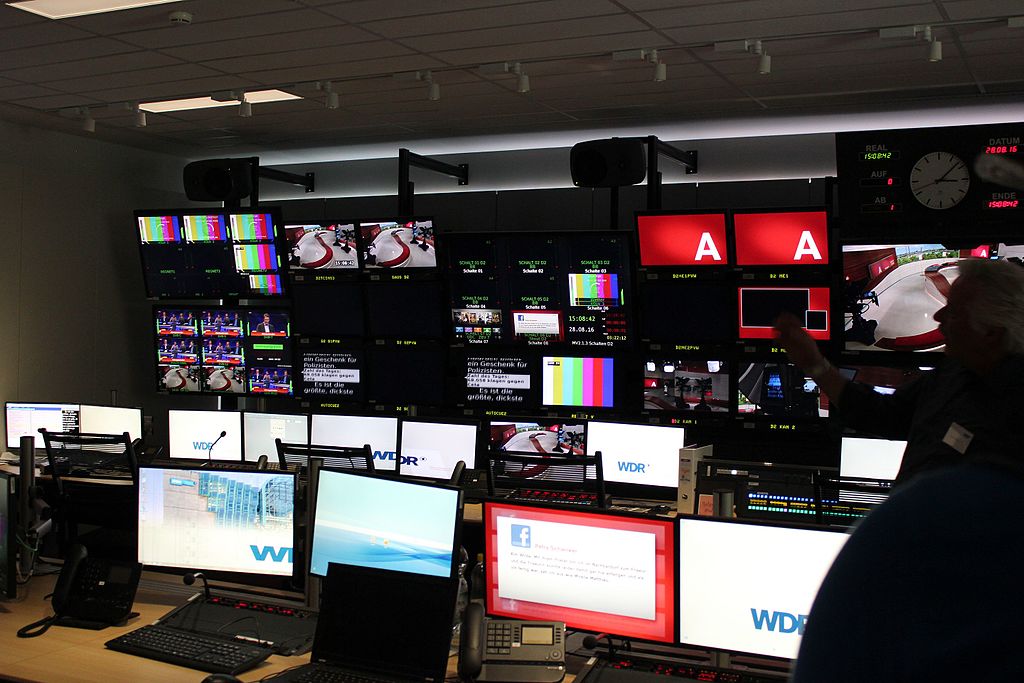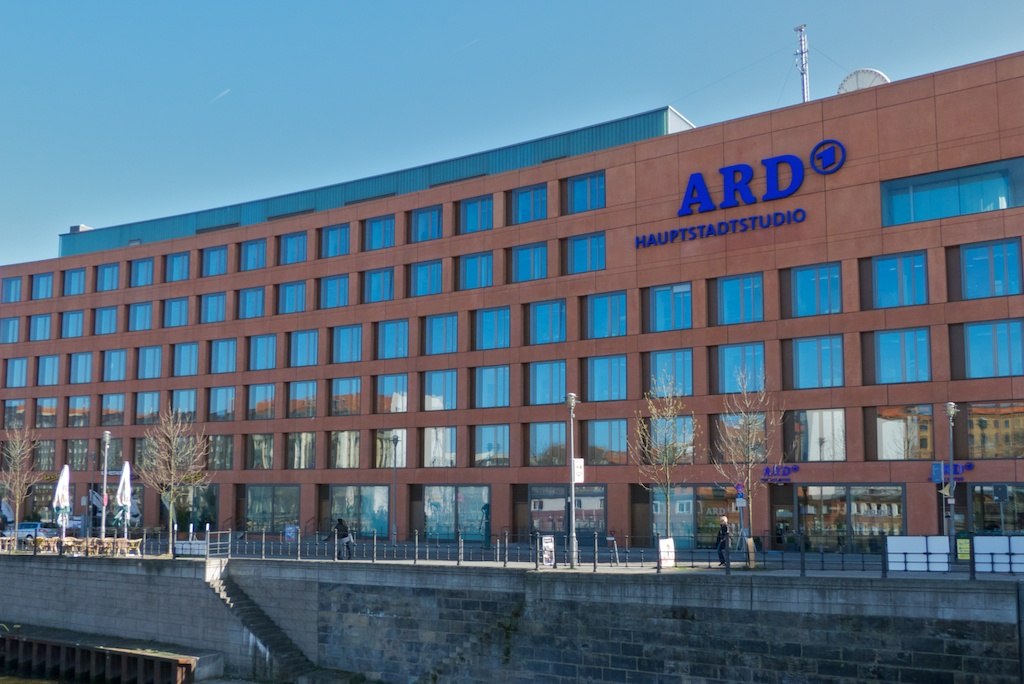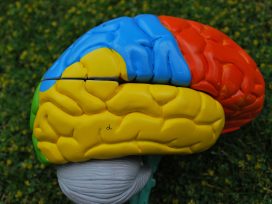Picture the following image: four young people sitting on a lawn, laughing as they share a pizza. Above, the words: ‘Together we want to make every person’s life a little more valuable every day’. This is not an ad for a convenience food start-up, but how West German Broadcasting (Westdeutsche Rundfunk, WDR) presents its ‘channel strategy’ for live and digital formats.
After five years as a member of the WDR board of governors, I am not shocked. We live in a world dictated by the laws of the market. This leaves its mark on public service broadcasting and its efforts at reform. Still, public service broadcasting is legally defined as a non-commercial enterprise. It is one of the basic services that the state is obliged to provide its citizens. As part of the ‘fourth estate’, it is a pillar of constitutional democracy.
The introduction of private broadcasting did not affect this function. Like all other market participants, commercial media are financed through the sale of their products, whose value is determined by viewers and listeners. The criterion is ratings, which have been measured in Germany since 1985. Advertising prices are calculated on this basis. Anyone who believes that the reception and consumption of private radio and television stations is free is sorely mistaken. The producers of goods – be it pizza, cars or muesli – factor the costs of advertising into their prices. As consumers, we all pay indirectly for private media.
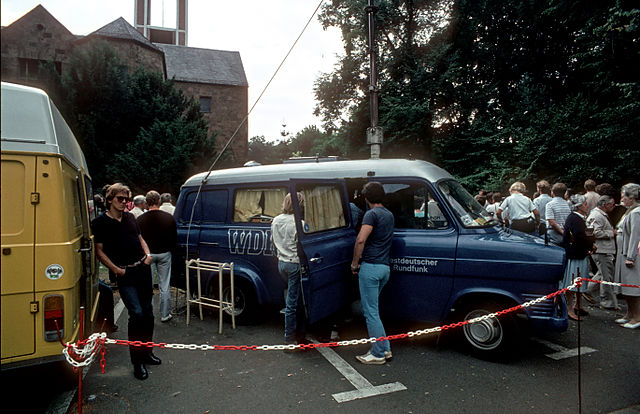
Sound engineering vehicle of a WDR radio broadcast in Bad Oeynhausen, 1982. Photo by WwwFrank, CC BY-SA 4.0, via Wikimedia Commons.
Until the mid-’80s, ratings played virtually no role at all in the programming of the regional public broadcasters that together form the nationwide conglomerate ARD, except in the competition with ZDF, Germany’s second national public broadcaster. It was only when private media arrived in 1984 that ratings began to prevail over quality. Nowadays editors discuss the success or failure of their programmes chiefly on the basis of ratings. In social media departments, likes are the marker of success. High-quality documentaries are relegated to night-time slots, in anticipation of low ratings.
How could this fundamental shift have occurred? The reason is obvious: public service broadcasting is not immune to the free-market spirit predominant everywhere else. Efforts to extend the laws of the market society to all areas of life mean that ratings have become the instrument of choice for programme-makers in public media. In addition to this come the social networks. Of primary interest is the clicks of the younger generation, an audience that public service media is terrified of losing. Yet this danger is much less obvious than has been publicly communicated. There is little evidence that older people only listen to radio, or that younger people only access audio content digitally. The high ratings recently achieved by the radio station Deutschlandfunk are, among other things, down to an increase in listeners in their twenties. Older listeners, on the other hand, increasingly tend to download podcasts.
The prevailing course of total commercialization is perfectly exemplified by WDR. Germany’s biggest broadcaster (and the second largest in Europe after the BBC) now plans to limit radio to current affairs, while moving the large part of its cultural content online. ‘In the long run this means that we will produce less demanding material for conventional radio,’ explained Valerie Weber, the WDR programme director for Science and Culture. Whereas radio is represented as ‘low-threshold’ (i.e. easy to consume), digital programming will stand out for its high production standards and quality of research, targeting specific groups with content on particular topics. Traditional programming will be reduced to its role as a live medium, responsible for information and news, while all in-depth content will be available as download. Restructured as easy listening, radio will supposedly attract more listeners. The broadcaster’s cultural and educational remit will be fulfilled in the digital sphere, through content formats reaching social groups, rather than the whole of society.
Media society as class society
Following their free-market principles, media managers are atomizing society into ever smaller demographics. As one put it: ‘These days there are countless communities, each of which we have to reach. The literary audience alone is fragmented into a fantasy community, an LGBTQ community, an avant-garde community and much more. The task is not to wait for these people to turn on their radio, but to enter the digital spaces that they frequent.’
This approach to the role of public service broadcasting is a classic case of cognitive dissonance. Although WDR executives, like those of other broadcasters, know that they must make programmes for the general public in order to justify the license fee, a large part of the population is effectively written off. The class society that already exists in private media – quality content for the wealthier and better educated, inferior content for the poorer and less educated – becomes the yardstick for the public media.
In the new marketing-speak, members of the public will be offered a personalized ‘user journey through WDR’s product worlds’. While the content of the new digital programmes remains a secret, there is abundant information about how audience data are being used – for example, using AI to link content data with user data. In WDR’s next generation newsroom, editors work using an SEO wizard that shows which content has been highly rated and frequently accessed, and therefore deserves special attention.
The WDR board of governors has often discussed the advantages and disadvantages of a centralized newsroom. I am convinced of the synergetic effects of producing programmes for all formats – television, radio and digital media. But I also see the dangers of creating a hierarchy of decision-making about content. This concern now seems almost antiquated, given the use of algorithms to optimize public service programming. How will this influence news production in the future? A recent report on the French media found that the popularity of a topic on Twitter also dictates its coverage in the press: if the number of tweets goes up by one per cent, the number of articles goes up by 8.9 per cent.
Programme reform that is focused purely on radical free-market principles, not on topics relevant to society, cannot be reconciled with the existing structure of public service media. When the public has been parcelled up into individual groups, people will sooner or later wonder why they should pay a fee for what is supposed to be a collective project in support of the common good. In that case it makes more sense to subscribe to individual ‘content’ channels, as with other streaming services.
Given such fundamental questions, the pursuit of these neo-liberal reforms is astonishing. The pandemic has shown us where the privatization of public services leads. Global crises cause people to question the effectiveness of democracy itself. Many seek authoritarian solutions. This increases the duty of public media to contribute to the free expression of opinion that is of existential importance for democracy.
Public service broadcasting serves the whole of society – as the place where the common good is constantly discussed and developed through public debate. On numerous occasions, high court rulings have not only guaranteed the independence of public service broadcasting from the market, but also made this a condition of its public funding. And yet the role of public service broadcasting is being challenged as never before.
Opposition to the license fee
‘Why should I pay the licence fee? I only watch the private channels anyway,’ a taxi driver with Lebanese roots asked me recently. But it is not just Germans with an immigrant background that have little sympathy with public service broadcasting. The criticism of the license fee is strongest in eastern Germany. The decision of Saxony-Anhalt not to approve the latest increase applied to all German broadcasters. Parts of the political elite are reacting nervously, fearing for their popularity. In the CDU and CSU there are already plans for radical cutbacks in the remit and costs of public service broadcasting. They can count on considerable support.
There is a reason why east Germans especially often fail to appreciate the democratic and historical significance of public service broadcasting: for far too long the East was not taken seriously in programming. Whenever Frankfurt was mentioned in the news, it only ever meant Frankfurt am Main. ‘For a long time, we didn’t realize that a German from the East automatically thinks of Frankfurt an der Oder,’ admitted the ARD anchor Jan Hofer. Until recently there were no important positions held by people with an eastern background. As in other socially relevant areas, western networks routinely blocked the path of easterners to leadership posts – often under the pretext of the Stasi involvement of their predecessors.

Cologne, WDR Studio Photo by Bundesarchiv, B 145 Bild-F001349-0030 / Leonhardt / CC-BY-SA 3.0, CC BY-SA 3.0 DE, via Wikimedia Commons.
But it is not only in the East that public service broadcasting is perceived as a cash cow. While consumer prices have risen by 35% over the last 25 years, income from license fees has skyrocketed by 70%. Suggestions for mergers of the regional broadcasters have been consistently shelved: provincialism has proven hard to overcome. The number of public service radio channels is absurdly high and could easily be reduced without any loss of quality.
Yet, instead of implementing sensible reforms, public service broadcasting has reacted to public and political pressure by capitulating to the market. In order not to put its funding at risk – and the high salaries and pensions at executive and mid-management level – it focuses more and more on ‘demand’, thus hastening the qualitative decline of its programming. In an effort to maintain its ratings, WDR has sought to lure viewers from private TV channels with trashy shows – one of which was cancelled after a racism controversy in January 2021.
Evidently afraid of being seen as elitist, WDR now opts for emotionalism over critique. According to the programme directors responsible for ‘culture and society’, the goal is to convey ‘an emotional concept of culture’. They have obviously not read the survey conducted by WDR in 2017 on how viewers and listeners understood the concepts used in its mission statement (information, guidance, education, culture and entertainment). The survey found that ‘culture’ was associated with something elevated: ‘As a rule a certain degree of sophistication must be guaranteed. Often it has to be something special, of high quality, that demands concentration and seriousness as well as a higher level of education.’
Following the mega-trend
These statements are diametrically opposed to WDR’s efforts to (re-)invent its audience. Now, viewers and listeners are supposed to be able to encounter cultural content randomly, without it being tied to a particular slot in the schedule. Items are to be much briefer and more newsy, so as to guarantee audience attention. One thing is clear: this new, truncated form quite does not require the concentration and seriousness expected by audience members themselves.
Culture in bite-sized formats corresponds to the wish for diversion rather than better understanding. The public is effectively denied any deeper wish for education and anything that might satisfy that wish is removed from traditional formats. Such paternalism reveals a remarkable contempt.
By the end of this decade, the director of WDR and current ARD chairman Tom Buhrow aims to serve ‘eighty million directors of programming’ with high-quality content. ‘The mega-trend towards individualization will become the norm across the board. Apart from dramatic events and a few live broadcasts, there will no longer be any media events that bring together large parts of the population.’ Buhrow’s statement sums up the general philosophy.
In the last few years, we have been able to observe the result of the extreme segmentation of society. The social contingency of the individual has never been so apparent as during the pandemic. Yet, in order to keep pace with individualization, ARD plans to turn itself into a digital platform by 2030. The first question is always how to reach more viewers and listeners. Media managers, taking their lead from the logic of management consultancy, understand public service broadcasting as a content provider competing for users’ time and attention. But ‘picking up’ users where they happen to be rather than taking them in unknown directions contradicts the very mission of public service broadcasting.
Part of this mission is to set the agenda and to push it, even if the cause is not (yet) popular. The reform of public service broadcasting cannot be about designing a branding strategy. The first draft of the ARD guidelines for 2021–22 rightly stressed the duty to fostering the sense of community: ‘We want … to do something to counter the ongoing fragmentation of society, to offer something that serves as a unifier, that starts discussions … and does not solely serve “communities of interest” or elites. We want to enhance a sense of togetherness in our country and not to promote its atomization.’ How can WDR achieve this aim if its programming is increasingly siloed? How can public service act as a social unifier if cultural content is kept out of the medium of live radio?
Increasing public accountability
The climate issue is arguably the most important socio-political debate of our time and one that affects everyone’s lives. Only live programming can bring about socio-political discourse on the topic. A daily climate show on live TV and radio would ensure that the debate is kept alive; it would also reach people who may not otherwise think about the issue or prefer to ignore it.
Another example: how to initiate a debate about the fact that socially disadvantaged people have been dying from Covid far more frequently? Obviously not through downloadable formats. Part of the remit of public service media is to provide members of society with a sense of orientation. Content that affects the entire society must be debated collectively – especially when authoritarian populism is on the rise. Public service media are still a suitable instrument for this, as increased confidence in public service broadcasting during the pandemic testifies.
Germany’s state broadcasting contract grants individual organizations considerable scope for the interpretation of its aims. Whether these interpretations prove convincing is determined by the public. The public is the highest authority to which a public service broadcaster is answerable. But when public service media are no longer willing to serve the collective interests of a society, talk of ‘the common good’ is empty rhetoric.
During the pandemic there have been many indicators of a shift in thinking. The trend towards neoliberal programming is not unstoppable. As a supervisory body, the WDR board of governors has an opportunity to halt public service broadcasting’s march in this direction. Yes, we are up against considerable opposition. Authoritarianism is rampant, not just in politics. People want to retain control and try to eliminate everything that gets in their way. This explains the reduction in the number of seats on the board of governors in the new WDR statute, which primarily targets the cultural bench and independent political voices.
The ARD’s dialogue on the future, on the other hand, offers a ray of hope. It involves 170 citizens selected at random who joined representatives of the ARD on 8 May at an inaugural event. Throughout June, citizens across Germany took part in a dialogue on topics and expectations that emerged from this meeting. In November a virtual closing conference with the citizens’ council will set out a summary of their conclusions.
A governing board whose members are selected randomly would place limits on the political parties, who continue to dominate the decisions of the current board. Of course, there are legitimate objections. The former chair of the Directors’ Conference of State Broadcasters, Norbert Schneider, highlights the wide disparity in expertise between the management of a broadcaster and the board of governors. He supports a different strategy: ‘Membership of a board of governors needs to become a job. A member must be extremely well informed about the subject he or she is monitoring. Ultimately, every bit as much as the professional participants.’ So the discussion is now afoot. And one thing is already certain: a breath of fresh air would do public service broadcasting a lot of good.
